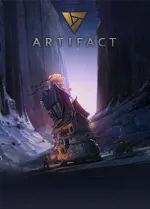Our extra-large special edition is here. Subscribe today and receive the 25% longer issue at no extra cost!
Artifact

After watching several rounds of Valve’s new card game, Artifact, and playing a couple of my own, I don’t think it’s a stretch to call it the Dota 2 of card games. Designed by Magic: The Gathering creator Richard Garfield, Artifact is, like Dota, intimidating at first. Between three separate battlefields with separate health pools and positions, ten total heroes with different color-coded affinities, and, outside the game, a reevaluation of how Valve views its market economies, Artifact is hard to wrap your head around. But that’s how I felt about Dota 2 when I first started playing it, and over 3,000 hours later it’s one my favorite games of all time. Does Artifact stack up?
A Game Across Three Lanes
Artifact is dense, and the best way to explain it is probably to just walk you through a match. I wasn’t able to mess around with the deck-building aspect of Artifact during our play session (which is probably for the best, since I would have had no idea what I was building anyway), and instead played two rounds using pre-built decks. The minimum card count is 40, though you can have as many cards in your deck as you want.
Each deck is based around five heroes, each of which has a border that’s either red, blue, green or black. Generally speaking, Red is based around stronger heroes with weaker abilities, blue is based around weaker heroes with powerful spells, green offers various stat buffs and additional creeps, and black has a host of mobility options, direct damage, and other sleights of hand. These affinities are more than a subtle nudge toward a strategy, however. Most cards you hold or draw in your hand have a matching color, and if you don’t have a hero of that color in a particular lane, you won’t be able to play that card at all. Affinities aren’t new to card games, and while I occasionally forgot I couldn’t play a card because I didn’t have the right hero in that lane, it wasn’t too hard to figure out why.

Art Credit: Daarken.
If you’re familiar with card games, think of Artifact as playing three matches of a regular card game at once, except these battles all interact with each other. At the start of each match, three of your five heroes are randomly assigned to a lane, along with a single creep unit. You start with five cards in your hand and draw two per round. Each round is separated into three lane phases, starting from left to right. In each lane phase, you can choose which cards to play based on a limited mana pool that increases by one each turn (just like Hearthstone). However, each lane has its own separate mana pool, so during the first round, you have three mana at your disposal in each lane phase.
For most players, the three-lane structure will be the biggest hurdle, and what will ultimately separate Artifact from other card games. Part of what makes Hearthstone so immediately appealing is its pick-up-and-play approachability; if the matchmaking gods treat you right, you can launch the client and be done with a match within about seven minutes. Valve estimates the average match length for Artifact is 12 to 15 minutes. This makes it harder to jump in, and keeping track of three separate fights was tricky at first, since you not only have to allot your cards across the lanes, but make decisions according to how your actions will affect each fight. Pulling off deft maneuvers across three fronts felt cool, and deciding how to distribute your heroes and cards each turn based on your opponent’s actions adds a nice strategic layer.
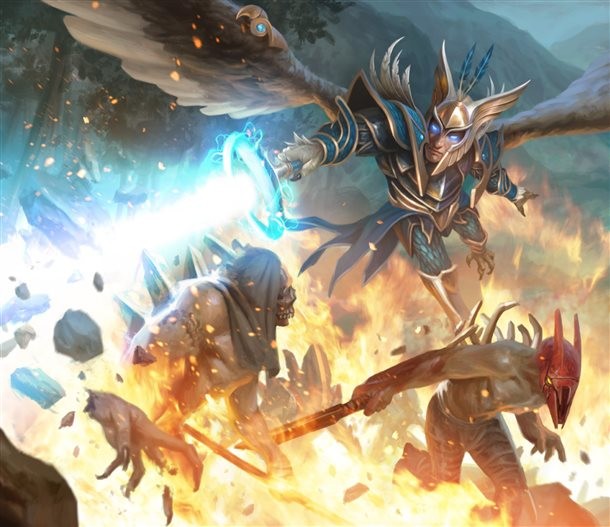
Art Credit: Daarken.
Fighting, Shopping, And Annihilation
The lane phase itself, however, plays out more like a round of Gwent, in which players trade moves one at a time until both players choose to pass up their turn. If you have the mana for it, you can play cards to buff your heroes, summon extra creeps or units, fire spells that deal damage, and more. Although you might recognize some from Dota, most of them have names and attributes new to Dota. There are also some new heroes, such as Rix, Sorla Khan, and Kona, which Valve says will eventually make their way over to Dota 2. Other cards will also serve to flesh out Dota’s lore in a way the MOBA hasn’t been able to until now. As someone who prefers Gwent’s tense back-and-forth, poker-esque anteing up and baiting over Hearthstone’s more one-sided turns, I definitely enjoyed Artifact’s reactive turns.
Heroes definitely feel weaker relative to creeps in Artifact than in Dota, but they’re still the core of the game. Some heroes have active abilities they can dish out. Sniper, for example, can deal five damage to any creep or hero in his lane. Others have passive skills: Drow Ranger offers every unit across all three lanes +1 attack, while Crystal Maiden returns two mana for every spell you use. Axe doesn’t have a special ability, but compensates by having lots of health and damage to throw around. Each hero also offers access to three copies of a specific card (though any hero can use them, as long as it’s the right color). This means across five heroes, 15 cards are immediately accounted for when you’re building a deck. But you’ll want these cards in your deck anyway, as they’re some of the strongest in the game. Luna’s Eclipse deals out massive amounts of damage at random, while Sniper’s can deal 10 damage to any unit in any lane.
After both players choose to pass, all the enemies and creeps attack each other at once according to their position. If your hero or creep is across or facing an enemy (depending on a random assignment at the beginning of the turn), you deal and receive damage based on each unit’s attack, health, and armor stats. If there isn’t an enemy sitting across from your unit, it attacks one of your enemy’s towers. If you manage to destroy a tower, it becomes an Ancient. If you can destroy an Ancient or two towers, you win the game. Towers are exceptionally fortified, however, and will take several turns to destroy. Assuming no one loses during that lane phase, the round shifts one lane to the right, until both players have passed their turn on all three lanes. This makes positioning crucial; if you’re facing an impossibly strong Axe, for example, finding a way to plant even a basic creep in his path can render him harmless.

Art Credit: Magali Villeneuve.
Once the fighting’s all done, you do a bit of shopping. If you manage to kill a unit (hopefully, an enemy hero) during a round, you earn gold you can spend on special cards that are added to your hand between rounds. This includes usable items like healing salves or teleport scrolls, as well as equippable items like the Blink Dagger (one of the few ways to freely hop among the lanes), all of which come from a second deck of nine cards you build beforehand. Because the main object of the game is to destroy towers and not heroes, gold acts as an incentive to kill heroes, and items, in turn, make it easier to destroy towers. If a hero dies during lane phase, they’ll have to sit out during the next round, but will come back after that (unless it’s Rix, who gets to come back at the start of the next round.) From there, it’s rinse and repeat.
The shopping system reminds me of the Pokémon card game, where you have a side deck of six rewards to choose from. It’s a fun nod to Dota 2’s emphasis on economy, and works as a deterrent against overwhelming odds. The right item bought at the right time can make a huge difference.

Art Credit: JiHun Lee.
After I played a couple of rounds, Valve showed the game off by having high-level CCG players from other card games take the reins for an internal tournament. As expected, matches went by far quicker, and I also saw the kinds of decisions players who know what they’re doing will face. One aspect that emerged was turn priority; basically, if you choose to pass on your turn first, you make the first move on the next lane phase, which can be a huge factor when a lane’s tower is on its last legs and every move matters.
Like I said, it’s a lot to take in. Like in any good card game, turns only get more complicated as you gain access to more mana, start unleashing intricate spell combos, and turn every round into that much more of a minefield. Do you abandon one lane entirely for a couple of turns by blinking a hero out of it and pray you can destroy the two surrounding towers before they destroy your unprotected ancient? Do you clear an entire lane using the Annihilation spell now, or try to bait your opponent into investing more heavily into it before blowing it all up? Do you save your gold for a card that will make future purchases much cheaper, or spend what you have The Blink Dagger and Healing Salve that could save your Legion Commander from certain doom? The combination of more reactive turns, lane distribution, and hero variety make certain answers hard to come by, and it makes Artifact feel like a more open-ended card game.
No Longer Free To Play
With most card games, the business model is as important as the game itself. Valve is incorporating a number of lessons from Dota 2 and Counter-Strike: Global Offensive. The first is a shift away from the pure free-to-play models that have defined other card games over the years. Before we played Artifact, a group of press sat down with Gabe Newell to talk about Valve’s hopes for Artifact as a marketplace. “When you’re in a free-to-play environment, you end up with this tendency that rarity equals power,” Newell said. “So you’re trying to create get this artificial relationship [between the two], and that’s not the case at all with Artifact.” Newell promises that common cards will be among the most powerful, and that the company will try to steer away from pay-to-win models as much as possible.
Players will have to buy in to receive their first few cards (what that buy-in will be Valve isn’t sure yet). From there, they can buy additional card packs. Valve sees opening card packs as a competitive opportunity through draft-style and closed deck formats. Newell thinks of every card pack purchase as part of a shared economy, one where the cards you have retain their value because they’re actively being traded. To that end, Valve is letting players treat their cards the same way they would physical ones. If you don’t want or already have a card you bought from a pack, you can just sell it on the Steam marketplace. If you’re looking for a single card to complete the incredible deck idea you just cooked up, you can go and buy it directly from someone else, without having to burn money on card packs until you get it, getting cards that are useless along the way. This attaches real value to individual value to each card that you can trade in at some point.
According to Newell, this lets players more easily think about implementing new strategies. “Let’s say in a game where my assets are depreciating, where I can’t exchange them, I can spend a bunch of time building up stuff and then I’m stuck with my strategy,” he says. “I can’t make a technical decision and try something else because essentially I have to burn all of the value that I’ve put into the game so far.” Because players can’t easily trade in cards they already have for new ones in this model, it becomes harder for them to develop and experiment with new strategies. Artifact hopes to change this.
Another reason for moving away from free-to-play, according to Newell, is that when free and paid-for items intermingle, the paid-for items lose their value. “If time is free, or an account is free, or if cards are free, anything that has a mathematical relationship to those things ends up becoming devalued over time, whether it’s the player’s time and you just make people pay to grind for thousands of hours for minor trivial improvements, or the asset values of the cards or whatever, that’s a consequence,” he says. Considering Valve wants to attach real value to every card, it makes sense that the entire economy would be cordoned off from free stuff. This is likely a lesson learned from their previous economies; in Dota 2, for example, cosmetic items that came from purchasable chests could wildly vary in price, making them either inaccessible to players who didn’t want to invest a ton of money or making them worthless in the long run. Unlike cosmetic items, Artifact’s cards have real gameplay implications, making it even more important to keep them valuable.
This also factors into Valve’s other marketplace, user-made items, which has become a huge part of both Valve’s pitch to players to make Valve games feel like they belong to the community and for Valve make some cash on the side. Across their other games, avid workshop devotees can stand to make money by having their custom items approved and put up for sale (Valve, of course, gets a cut of that sale). Valve has confirmed that while Artifact is not yet as moddable as they’d like it to be (so far, the biggest opportunity they see is for illustrators making custom art for cards), they plan to let non-artists contribute in some way. Following Valve’s logic, it’s possible that the move away from free-to-play would make these sorts of user-made items more valuable as well.
While the logic seems sound, it’s hard to know how this new model will play out. I wasn’t able to glean how rarity would work under this system, but as a layman I can’t help but wonder whether this leads not to a model where rarity is power, but where power is rarity – a system where the most useful cards aren’t traded as often, and thus become harder to come by, leading to instances where players may have to pay a bit extra for the best cards. This might lead to some of the price-gouging seen in physical card games. Without knowing specifics, however, it’s hard to speculate.
Polishing Up The Edges
While the idea of a card game based on Dota 2 seemed a little bit “me-too” for Valve or a side project as they work on something larger, it’s clear Valve is taking Artifact seriously.
It’s a serious card game, and whether its higher skill ceiling, dense approach, and new market economy work out remain to be seen. Although I only barely had the hang of it by the time my session was over, I’m looking forward to playing more of it when it hits closed beta later this spring. It fuses a lot of elements of Dota and card games I enjoy, and while its intricacies might make it overwhelming at first, I’m eager to dive in and just keep learning, even if I know I won’t fully grasp it for a while. After all, one of the things that makes Dota 2 special is the continual learning process that, while not always intuitive, generally leads to fun, worthwhile discoveries that reward experimentation. Let’s hope that’s the case with Artifact.
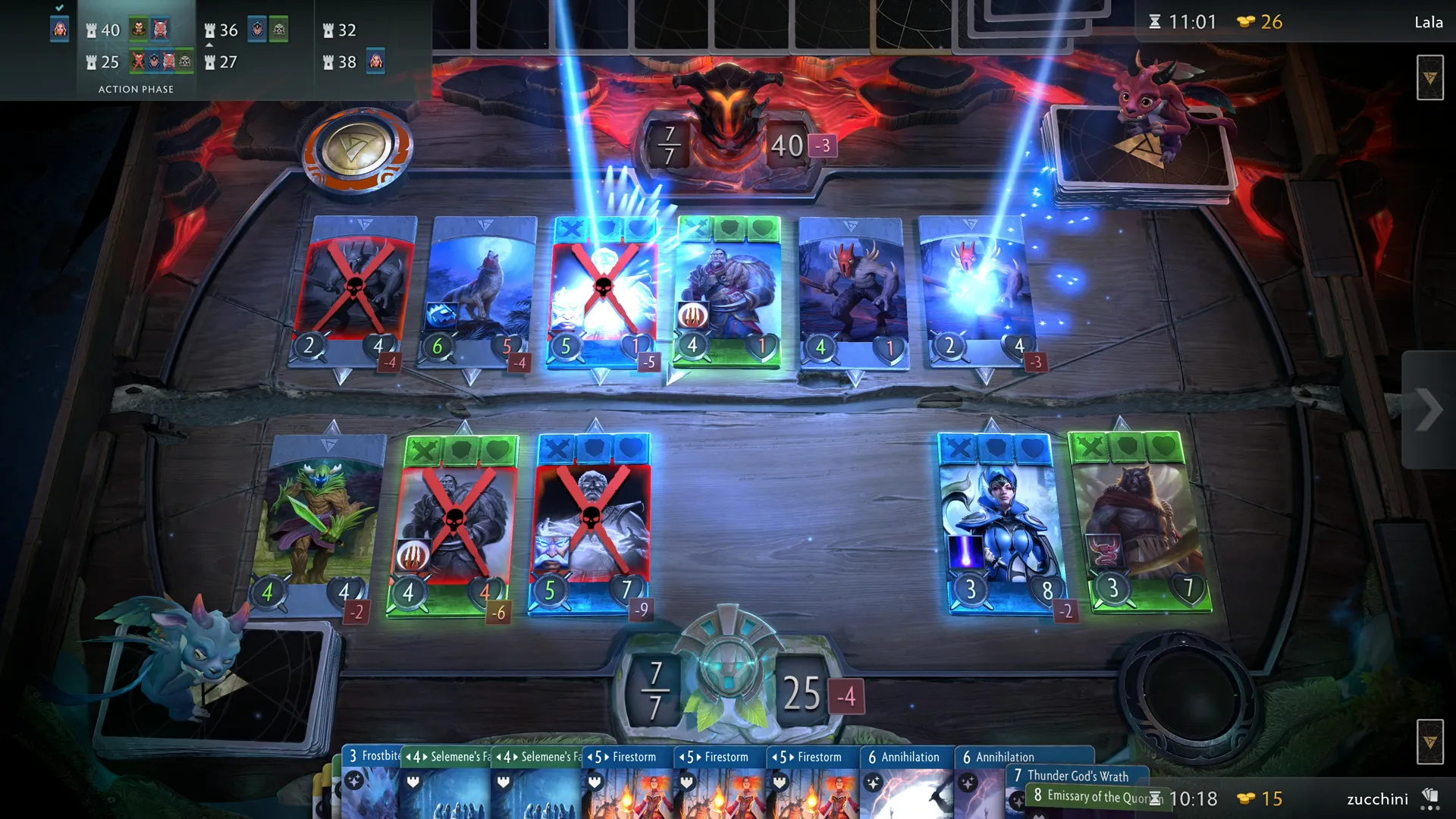
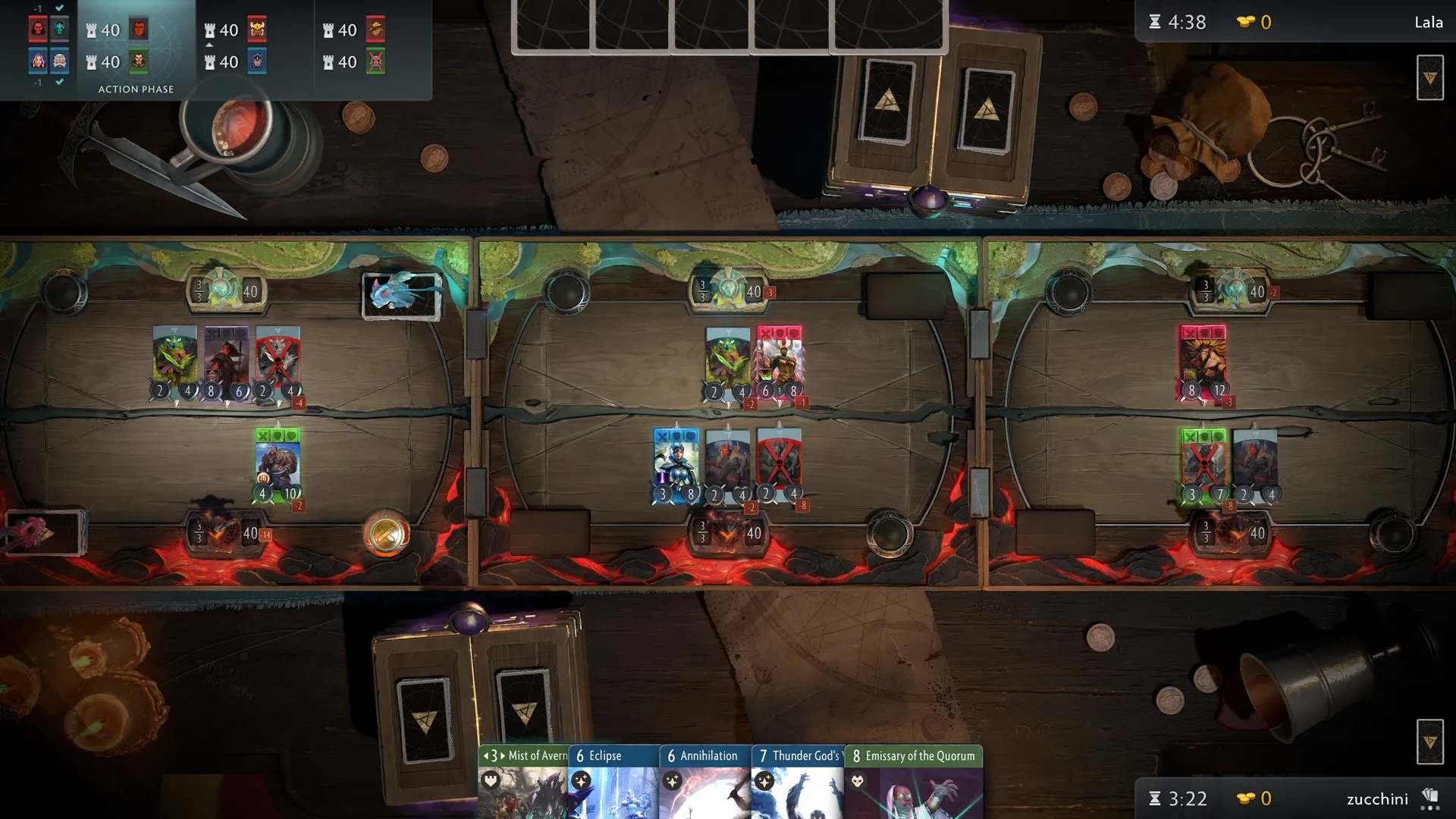
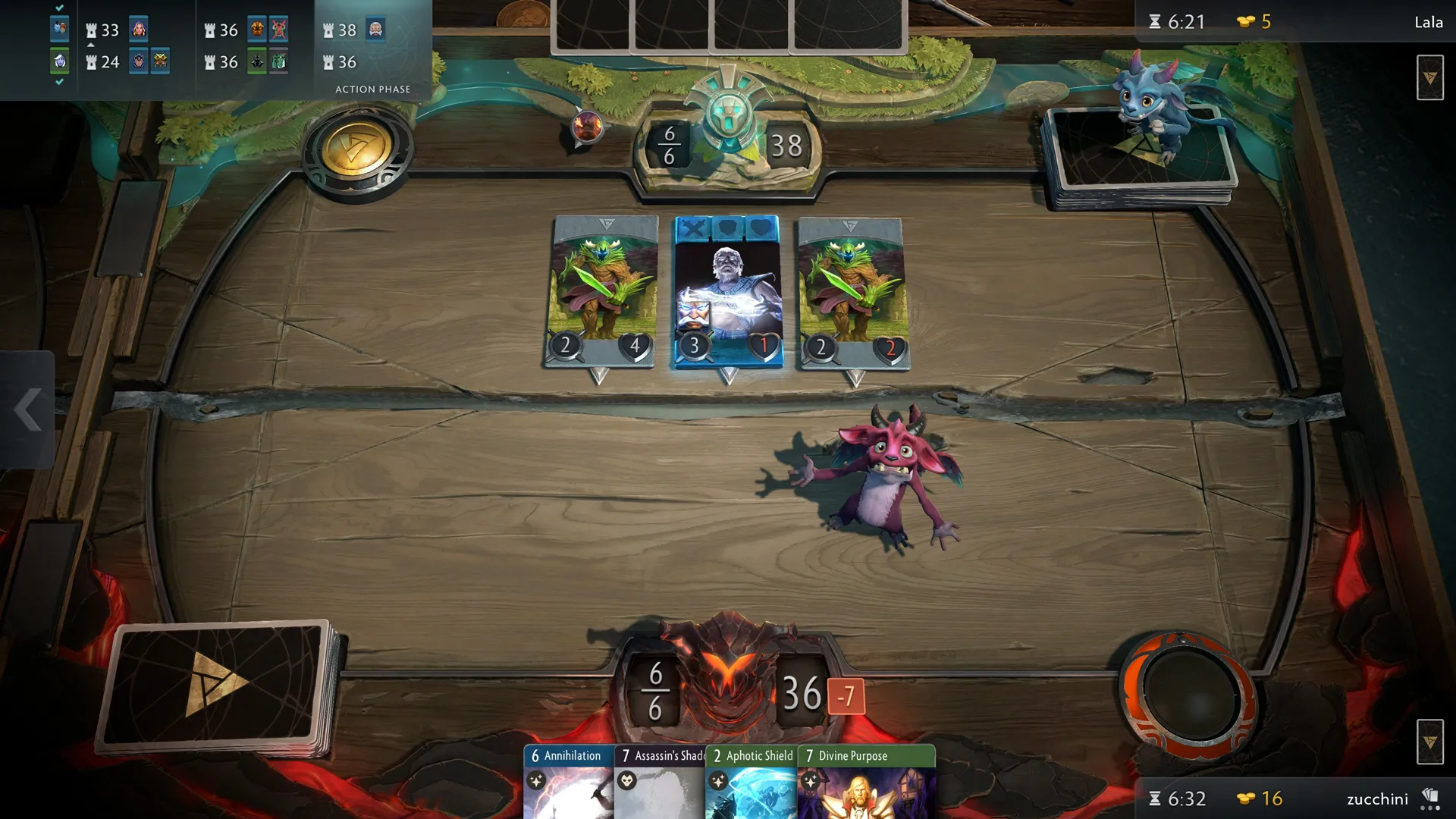
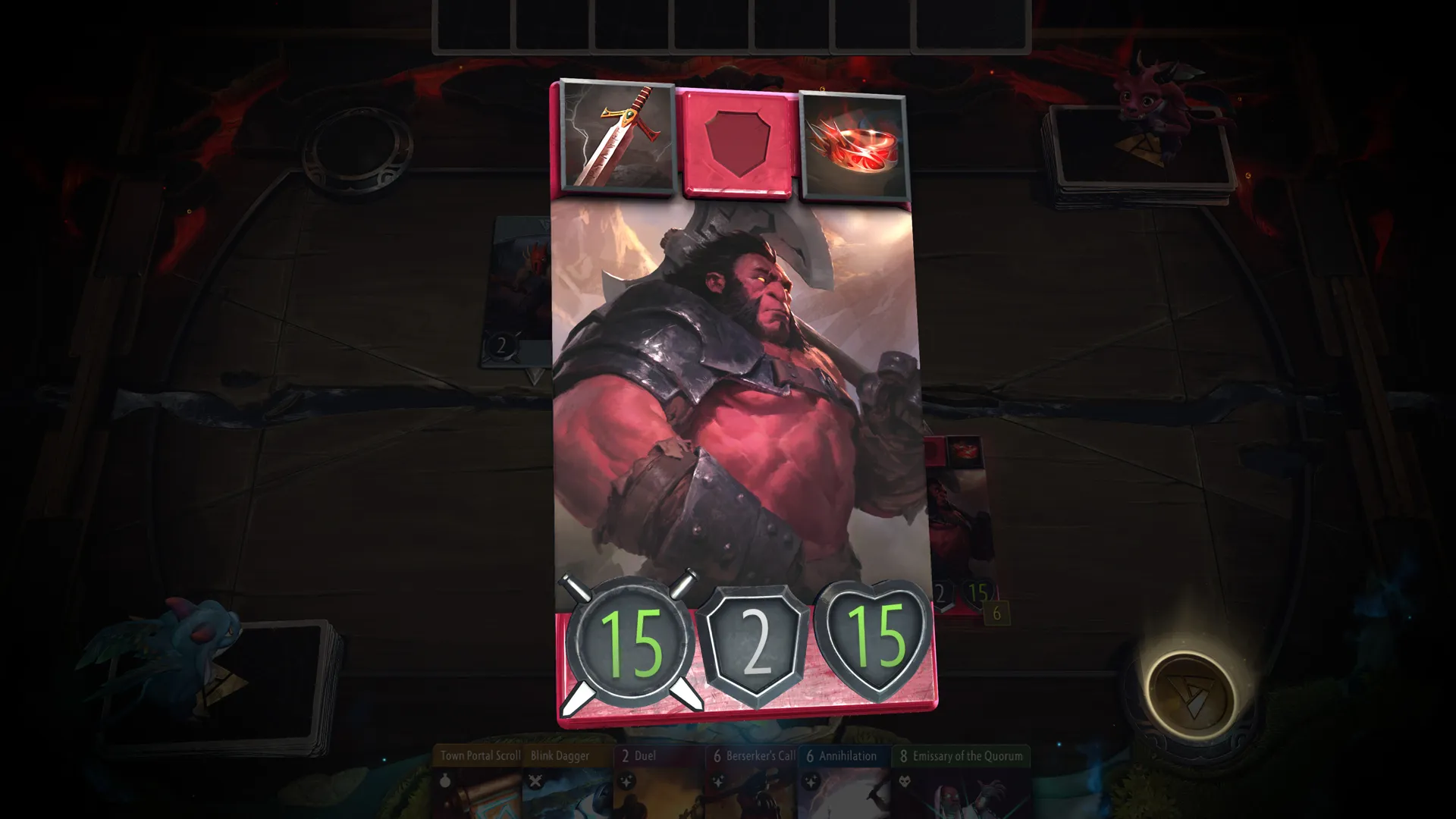
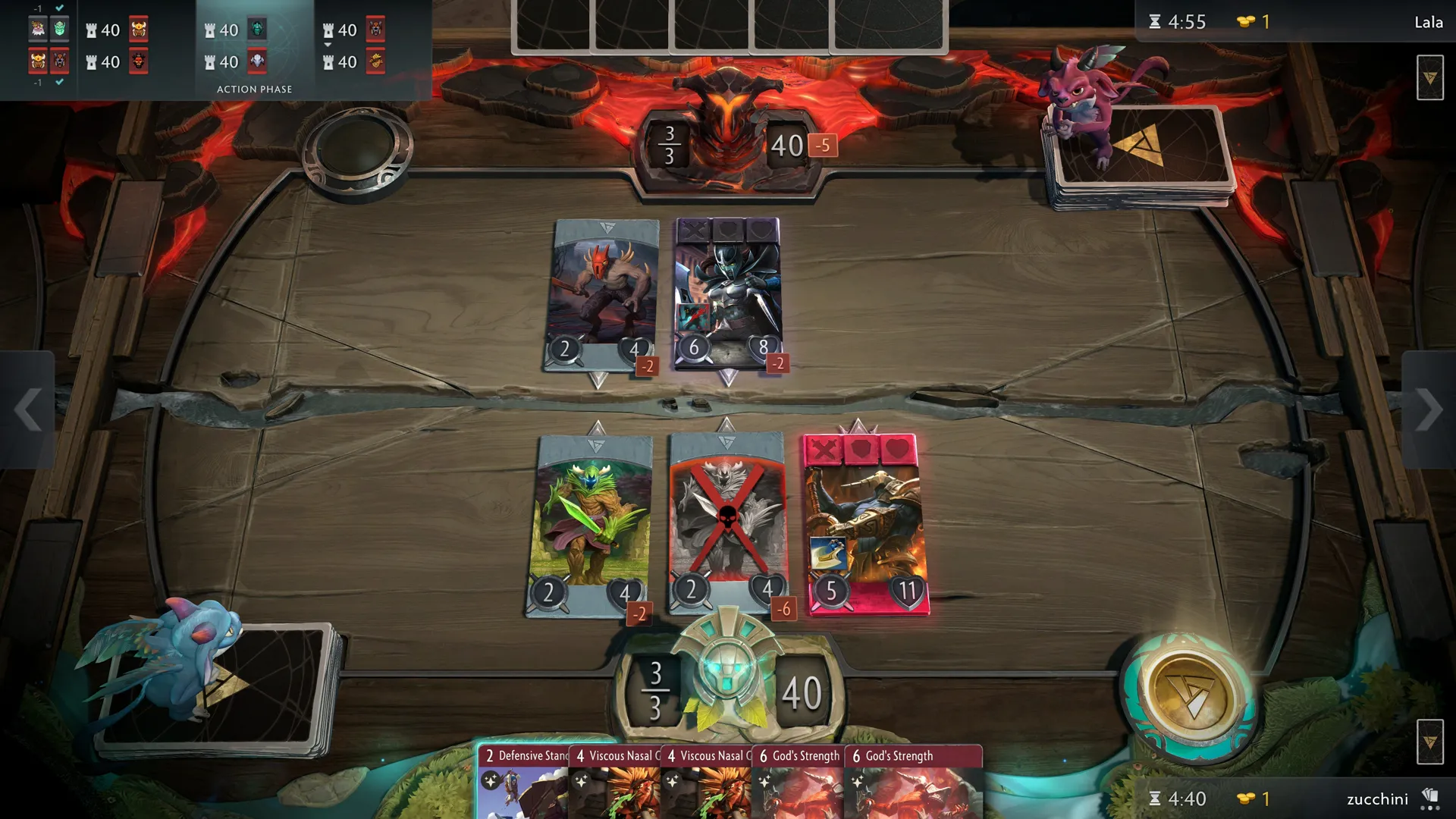

Get the Game Informer Print Edition!
Explore your favorite games in premium print format, delivered to your door.
- 10 issues per year
- Only $4.80 per issue
- Full digital magazine archive access
- Since 1991
